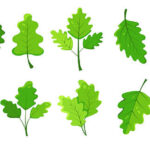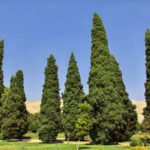Oak leaves are one of nature’s most recognizable and historically significant elements, representing a fusion of beauty, functionality, and symbolism. Found primarily on oak trees, which belong to the genus Quercus, oak leaves exhibit a wide variety of shapes, sizes, and adaptations that allow them to thrive in diverse climates ranging from temperate forests in North America and Europe to subtropical regions of Asia. Beyond their aesthetic appeal, oak leaves play critical ecological roles by supporting wildlife, enriching soils, and contributing to forest ecosystems’ health. Furthermore, oak leaves have been used in medicinal remedies, crafts, decorations, and cultural rituals, making them not just a botanical element but a cultural and practical resource throughout human history. Understanding oak leaves involves exploring their morphology, variations, physiological functions, ecological significance, practical uses, and symbolic meanings, as well as how they impact human and environmental systems.
1. Botanical Characteristics of Oak Leaves
Oak leaves are simple leaves, meaning each leaf is a single undivided blade, although some species may have lobed or serrated edges. Their morphology varies significantly depending on species, climate, and environmental conditions.
Key Features of Oak Leaves:
- Shape: Typically lobed, but can be rounded, pointed, or deeply incised.
- Venation: Pinnate venation, with a central vein from which secondary veins branch.
- Texture: Ranges from smooth to rough, sometimes with fine hairs on the underside.
- Color: Green during the growing season; shades of yellow, red, or brown in autumn.
- Attachment: Alternate arrangement along branches, not opposite.
| Feature | Description | Function |
|---|---|---|
| Shape | Lobed, pointed, rounded, or toothed | Maximizes photosynthesis and gas exchange |
| Venation | Pinnate with central vein | Structural support and nutrient transport |
| Texture | Smooth or hairy | Reduces water loss, protects from herbivores |
| Color | Green to brown in fall | Photosynthesis and seasonal adaptation |
| Arrangement | Alternate | Minimizes shading between leaves |
Oak leaves are often deciduous, falling in autumn to reduce water loss during winter, though some species are semi-evergreen or evergreen, depending on climate. Their resilience and adaptability are key to the longevity of oak trees, some of which live for hundreds of years.
2. Types of Oak Leaves
Oak trees are highly diverse, with over 600 species worldwide. The leaves vary in shape, size, and margin structure, reflecting evolutionary adaptation to local conditions.
2.1 Simple Lobed Leaves
- Found in many temperate species, e.g., Quercus robur (English oak).
- Lobes can be rounded or pointed.
- Adapted for temperate climates with moderate rainfall.
2.2 Serrated or Toothed Leaves
- Common in species like Quercus cerris (Turkey oak).
- Fine teeth along the margin help increase transpiration efficiency.
2.3 Evergreen Oak Leaves
- Found in Mediterranean and subtropical species, e.g., Quercus ilex (Holm oak).
- Thick, leathery leaves minimize water loss in dry conditions.
2.4 Compound-Like Oak Leaves
- Though rare, some oaks have deeply lobed leaves resembling compound leaves.
- Enhances light capture while maintaining structural strength.
| Oak Type | Leaf Characteristics | Common Species | Adaptation |
|---|---|---|---|
| Lobed | Rounded or pointed lobes | Quercus robur | Temperate climates |
| Serrated | Fine teeth along edges | Quercus cerris | Efficient transpiration |
| Evergreen | Thick, leathery, dark green | Quercus ilex | Drought resistance |
| Deeply lobed | Highly incised margins | Quercus palustris | Maximized light capture |
3. Physiological Functions of Oak Leaves
Oak leaves are vital for the tree’s survival, performing a range of biological and ecological functions.
3.1 Photosynthesis
Oak leaves convert sunlight into chemical energy through photosynthesis, producing glucose for growth and energy storage. Their broad surface area allows maximum light absorption, while stomata regulate gas exchange.
3.2 Transpiration
Through stomata, oak leaves release water vapor, cooling the tree and maintaining nutrient uptake from roots.
3.3 Seasonal Adaptation
Deciduous oak leaves fall in autumn, reducing water loss during cold winters. Evergreen leaves maintain photosynthesis year-round in warmer climates.
3.4 Defense Mechanisms
Oak leaves contain tannins, bitter compounds that deter herbivores and protect against pathogens. Hairy textures or thick cuticles also serve as physical defenses.
| Function | Mechanism | Ecological Benefit |
|---|---|---|
| Photosynthesis | Chlorophyll in cells | Energy production for growth |
| Transpiration | Stomatal water vapor release | Nutrient transport and cooling |
| Seasonal adaptation | Leaf shedding | Survival in cold/dry seasons |
| Defense | Tannins, hairs, thick cuticle | Protection from herbivores and disease |
4. Ecological Role of Oak Leaves
Oak leaves contribute significantly to forest ecosystems, influencing nutrient cycles, habitat structure, and biodiversity.
4.1 Leaf Litter and Soil Enrichment
Fallen oak leaves decompose slowly, forming humus that enriches soil with nutrients. This enhances soil fertility and water retention, benefiting understory plants and microorganisms.
4.2 Habitat for Fauna
Oak leaves provide cover and food for numerous species, including insects, birds, and mammals. Certain caterpillars and beetles specialize in feeding on oak leaves, while fallen leaves shelter amphibians and small mammals.
4.3 Climate Regulation
Dense oak foliage regulates microclimates, moderating temperature, reducing wind, and maintaining humidity in forested areas.
| Ecological Role | Mechanism | Benefit |
|---|---|---|
| Soil enrichment | Decomposition of leaves | Nutrient recycling |
| Habitat provision | Leaf litter and canopy | Food and shelter for fauna |
| Microclimate regulation | Canopy shading | Temperature and humidity moderation |
5. Medicinal and Practical Uses of Oak Leaves
Oak leaves have been used traditionally for medicinal, cosmetic, and practical purposes.
5.1 Medicinal Uses
- Anti-inflammatory: Oak leaf infusions can reduce swelling.
- Astringent: Tannins in leaves help treat minor cuts or skin irritation.
- Digestive aid: In traditional remedies, oak leaf teas alleviate mild diarrhea.
5.2 Craft and Decorative Uses
- Used in wreaths, garlands, and ceremonial decorations due to their symbolism of strength and endurance.
- Pressed leaves can be preserved for art, scrapbooking, or botanical studies.
5.3 Mulch and Compost
Oak leaves provide excellent mulch for gardens, retaining soil moisture and slowly releasing nutrients.
| Use | Preparation | Benefits |
|---|---|---|
| Medicinal | Infusion or poultice | Anti-inflammatory, astringent |
| Decorative | Pressing or wreath-making | Cultural, ornamental |
| Mulch | Shredded leaves | Soil enrichment, moisture retention |
6. Symbolism and Cultural Significance
Oak leaves hold symbolic meanings in various cultures, often representing strength, endurance, wisdom, and honor.
- European traditions: Oak leaves adorn medals, military insignia, and ceremonial objects.
- Ancient civilizations: Druids considered oaks sacred; leaves symbolized divine strength.
- Modern symbolism: Commonly used in logos, flags, and emblems to denote durability and stability.
| Region/Culture | Symbolic Meaning | Example |
|---|---|---|
| Europe | Strength, victory | Military medals, coat of arms |
| Ancient Celtic | Sacred, wisdom | Druidic rituals |
| United States | Honor and valor | Presidential seals and military insignia |
| Japan | Longevity | Traditional artworks and gardens |
7. Seasonal Changes and Adaptations
Oak leaves exhibit remarkable seasonal adaptations, allowing trees to survive fluctuating climates.
- Spring: Fresh, tender leaves emerge, maximizing photosynthesis.
- Summer: Mature leaves support full energy production.
- Autumn: Leaves change color due to chlorophyll breakdown, signaling nutrient reabsorption.
- Winter: Deciduous species shed leaves to conserve energy; evergreen species retain leathery leaves.
These adaptations highlight the dynamic nature of oak leaves in response to environmental stressors.
8. Oak Leaf Morphology and Identification
Identifying oak species often depends on leaf characteristics:
- Lobes: Number, depth, and shape distinguish species.
- Margin: Smooth, serrated, or toothed.
- Underside color: Light, hairy, or glaucous.
- Size: Varies from a few centimeters to over 20 cm in length.
| Feature | Measurement/Observation | Species Example |
|---|---|---|
| Lobe number | 5–9 lobes | Quercus robur |
| Margin | Serrated or smooth | Quercus alba |
| Underside | Hairy or glaucous | Quercus ilex |
| Leaf size | 5–20 cm | Quercus palustris |
These features are essential for botanists, foresters, and ecologists in classification and conservation.
9. Environmental Importance of Oak Leaves
Oak leaves are integral to ecosystem balance:
- Carbon sequestration: Leaves contribute to photosynthetic carbon capture.
- Nutrient cycling: Fallen leaves enrich soil with nitrogen and organic matter.
- Support for biodiversity: Leaves provide habitat and food for insects, fungi, and microorganisms.
By maintaining these processes, oak leaves sustain forest productivity, wildlife populations, and soil health.
10. Conclusion
Oak leaves are far more than foliage; they are ecological engineers, cultural symbols, medicinal resources, and aesthetic elements. From their role in photosynthesis and nutrient cycling to their symbolic meaning in human societies, oak leaves represent a unique intersection of natural beauty and practical utility. Their seasonal transformations, diverse morphologies, and ecological functions make them a vital subject of study for botanists, ecologists, and anyone interested in nature’s intricate systems. By understanding oak leaves, we gain insight not only into the life of the tree but also into the broader ecosystem and cultural significance that has inspired humans for millennia.
5 Frequently Asked Questions (FAQs)
1. What are oak leaves?
Oak leaves are the foliage of oak trees, crucial for photosynthesis, nutrient cycling, and ecological balance.
2. What are the types of oak leaves?
They include lobed, serrated, evergreen, and deeply incised leaves, varying by species and climate adaptation.
3. What are the uses of oak leaves?
Oak leaves have medicinal, decorative, and practical uses, including teas, poultices, mulch, and wreath-making.
4. Why are oak leaves important ecologically?
They enrich soil, provide habitat for wildlife, regulate microclimates, and support forest nutrient cycles.
5. What is the symbolic meaning of oak leaves?
They represent strength, endurance, wisdom, and honor in various cultures worldwide.











